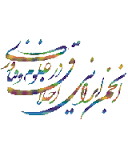چکیده:
زمینه: با توجه به نقش عمده کتابهای درسی در توانمندی شناختی و افزایش سطح استدلال و قضاوت اخلاقی دانشآموزان، ارزیابی آنان بر مبنای میزان انعکاس مولفههای رویکرد تربیت اخلاقی رشدی شناختی ضروری است. لذا هدف پژوهش حاضر، تعیین جایگاه مولفههای رویکرد مذکور در محتوای کتابهای درسی فارسی است. روش: روش تحقیق فعلی آمیخته است که با ترکیبی از روشهای تحلیل محتوای کیفی- قیاسی و تحلیل محتوای کمی انجام شد. جامعه آماری را کتابهای درسی فارسی دوره متوسطه اول تشکیل داد و نمونه همان جامعه آماری بود. لذا کلیه محتوای کتابهای نامبرده به روش تمام شماری مورد مطالعه قرار گرفت. از چک لیست محقق ساخته تحلیل محتوا بــرای گردآوری دادههــا و از روش آنتروپی شانون بــرای تجزیــه و تحلیــل دادههــا بهرهگیری گردید. یافتهها: برنامهریزان درسی و مولفین در تدوین محتوای کتابهای نامبرده، زمینه و فرصت مناسبی را برای ایجاد روحیه قضاوت صحیح در سطوح رشدی، واگذاری مسئولیت با توجه به سطح توانایی نوجوانان در درک و حل معماهای اخلاقی و همچنین تقویت مهارتهای تصمیمگیری در مواجه با تنگناهای اخلاقی به منظور ساخت ارزشها توسط خود فراگیران و دستیابی به استدلالهای قوی با استفاده از روشهای حل مسئله را فراهم ننمودهاند. نتیجه گیری: یافتهها حاکی از نیاز جدی به بازنگری در محتوای کتابهای مورد اشاره بر مبنای مولفههای رویکرد رشدی شناختی به منظور پرورش توانایی شناخت اخلاقی در نوجوانان و ارتقای سطح استدلال و قضاوت اخلاقی آنها از طریق ایجاد موقعیتهای مسألهمحور پیرامون معضلات اخلاقی است؛ زیرا میزان توجه به مولفههای رویکرد مذکور در محتوای کتابهای نامبرده از توزیع نرمالی برخوردار نیست..
چکیده: (ترجمه شده توسط هوش مصنوعی)
الموضوع: بالنظر الی الدور الريیسی للکتب المدرسیه فی التنمیه المعرفیه وزیاده مستوی التفکیر والحکم الاخلاقی للطلاب، من الضروری تقییم هذه الکتب بناء علی مدی انعکاس عناصر نهج التربیه الاخلاقیه التنمویه المعرفیه. لذا، فان هدف البحث الحالی هو تحدید مکانه عناصر النهج المذکور فی محتوی الکتب المدرسیه الفارسیه.
الطریقه: طریقه البحث الحالیه مختلطه وتم تنفیذها باستخدام مزیج من طرق تحلیل المحتوی النوعی-الاستنتاجی وتحلیل المحتوی الکمی. شملت مجتمع الدراسه الکتب المدرسیه الفارسیه للمرحله المتوسطه الاولی وکان العینه هی نفس مجتمع الدراسه. لذا، تمت دراسه کافه محتویات الکتب المذکوره باستخدام طریقه الاحصاء الکامل. تم استخدام قايمه المراجعه التی اعدها الباحث لتحلیل المحتوی لجمع البیانات واستخدمت طریقه انتروبیا شانون لتحلیل البیانات.
النتايج: المخططون التربویون والمولفون لم یوفروا فی اعداد محتوی الکتب المذکوره البیيه والفرصه المناسبه لتعزیز روح الحکم الصحیح فی مستویات النمو، وتکلیف المسوولیات بناء علی مستوی قدره الشباب علی فهم وحل الالغاز الاخلاقیه، وکذلک تعزیز مهارات اتخاذ القرار فی مواجهه المعضلات الاخلاقیه بهدف بناء القیم بشکل ذاتی والوصول الی استنتاجات قویه باستخدام طرق حل المشکلات.
الاستنتاج: تشیر النتايج الی الحاجه الملحه لاعاده النظر فی محتوی الکتب المشار الیها بناء علی عناصر النهج التنموی المعرفی بهدف تنمیه القدره علی التعرف علی الاخلاق لدی الشباب ورفع مستوی التفکیر والحکم الاخلاقی لدیهم من خلال انشاء مواقف قايمه علی المشکلات حول المعضلات الاخلاقیه؛ لان مدی الاهتمام بعناصر النهج المذکور فی محتوی الکتب المشار الیها لیس له توزیع طبیعی.
چکیده:
Background: Considering the major role of textbooks in cognitive ability and increasing the level of reasoning and moral judgment of students, it is necessary to evaluate them based on the degree of reflection of the components of cognitive developmental moral education approach. Therefore, the aim of the current research is to determine the position of the components of the mentioned approach in the content of Persian textbooks.
Method: The current research method is mixed, which was done with a combination of qualitative-comparative content analysis and quantitative content analysis methods. The statistical population was formed by the Persian textbooks of the first secondary school and the sample was the same statistical population. Therefore, all the contents of the mentioned books were studied in full number method. The content analysis checklist made by the researcher was used to collect the data and the Shannon entropy method was used to analyze the data.
Results: Curriculum planners and authors, in compiling the content of the mentioned books, provided a suitable context and opportunity to create the spirit of correct judgment at developmental levels, handing over responsibility according to the level of teenagers' ability to understand and solve moral puzzles, and also to strengthen skills. They have not provided decision-making methods in the face of moral dilemmas in order to build values by the learners themselves and achieve strong arguments using problem-solving methods.
Conclusion: The findings indicate a serious need to revise the content of the mentioned books based on the components of the cognitive development approach in order to cultivate the ability of moral cognition in teenagers and to improve the level of their reasoning and moral judgment through creating a situation. The issues are centered around moral dilemmas; Because the amount of attention to the components of the mentioned approach in the content of the mentioned books does not have a normal distribution.

(پژوهیار,
,
,
)

